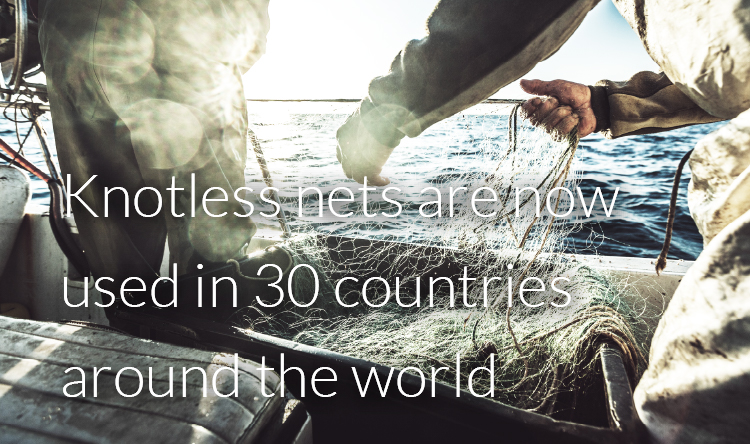About
knotless nets

We developed
the world’s
first knotless nets

Knotless net

Knotted net
Due to the complexity of the manufacturing process, mass production of knotless nets was long considered impossible. That was until 1925, when Nitto Seimo founder Teruaki Kobayashi successfully developed the world’s first mass production method for knotless nets. Since then, Nitto Seimo has led the industry as a top manufacturer of knotless nets.
Advantages of
knotless nets
Strongs
For all yarns and twines, when tied together by knots and pulled on, the force is concentrated on the knots, and it is at the knots where breaks occur. Knotless nets eliminate this problem, making them 20% to 30% stronger than knotted nets.
Lightweight and less bulky
Knotless nets are 20% to 40% lighter than knotted nets made with the same material and number of plies . As a result, they are less bulky and save space on fishing vessels.
Less water resistance
The absence of knots allows for better sinking, net shape retention, and water flow characteristics. Net shape retention characteristics are important not only to maintain enough space for fish to swim around inside the net, but also for operational safety.
Better fish quality
Fish often suffer injuries from knots during hauling operations. On the other hand, knotless nets help keep fish free from injury, improving their value.
Knotless nets
have changed
the fishery industry
around the world

Improved fuel economy
Knotless nets are lighter in weight, reducing the total weight of a ship and improving fuel efficiency.
Increased net volume
Because knotless nets are lighter and stronger, ships can be loaded with larger nets.
